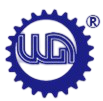Enhanced Control and Precision with Hydraulic Bending
Smoother Operation for Consistent Results
Hydraulic systems play a key role in making sure operations run smoothly when it comes to bending technology. The way these systems handle fluids allows for even distribution of force during the bending process, which means fewer mistakes in angle measurements and shape formation. Manufacturers across different industries have actually seen their defect rates drop after switching to reliable hydraulic setups. What makes modern hydraulic controls so valuable isn't just their ability to make quick adjustments mid-process, but how they cut down on material waste overall. When combined with proper feedback mechanisms, these systems help maintain consistent product quality throughout production runs, which explains why many shops continue investing in hydraulic bending solutions despite newer alternatives entering the market.
Programmable Bending Sequences
A major breakthrough in hydraulic bending tech comes from being able to set up programmed bending sequences. When parts need to be made over and over again, this really helps boost output since everything stays consistent. The programs themselves are pretty flexible too, so when production requirements change from one job to another, there's less waiting around for setup changes. Some big names in the industry actually ran tests showing how these programmable systems work across different scenarios, proving they handle all sorts of tasks efficiently. Inputting those bending parameters has gotten much easier on newer models as well, which means better results even when working with tricky materials or unusual shapes. And let's not forget about remote programming options either. These allow operators to tweak settings from afar without having to physically touch the machine, something that definitely speeds things up in real world operations.
Superior Power and Material Adaptability
Handling Thicker and Harder Materials
Hydraulic systems deliver a lot of force, which makes them really important when working with thick and tough materials across various industries. Take manufacturing plants for instance, they rely heavily on hydraulics because these systems just handle tougher stuff better. Industry data shows that hydraulic bending machines can work with materials that are around 25% thicker compared to what mechanical machines manage. This means manufacturers aren't limited to just basic metals anymore. They can actually process all sorts of specialized alloys and composite materials that would break regular equipment. The ability to handle such varied materials has changed how many factories operate today.
Hydraulic machines become much more adaptable when they work with advanced dies, which helps ensure the material gets deformed evenly throughout. Even deformation matters a lot because it cuts down on the chances of materials breaking while being bent, giving manufacturers better control over product quality. What makes these machines really stand out is how easily they switch from one type of material to another. This flexibility gives them a real advantage in factories where production needs change quickly from day to day. From handling tough composite materials to regular metal alloys, hydraulic systems consistently deliver strong performance and good efficiency, which explains why so many manufacturers rely on them for all sorts of production tasks across different industries.
Increased Efficiency in Production Settings
Reduced Cycle and Setup Times
Hydraulic bending machines offer significant benefits that can really transform how long it takes to produce parts in manufacturing environments. These machines cut down on the time required for each individual bend operation, which means faster overall production cycles and better output numbers. The programmable control features are another big plus because they let operators quickly adjust settings when moving from one material type to another or changing bend specifications. This kind of flexibility matters a lot in lean manufacturing setups where every minute counts. Some manufacturers report cutting their setup times by almost half with these machines, which translates into real money saved over time. Plus, many models come equipped with universal tooling systems that eliminate the hassle of constantly swapping out different tools during production runs. When all these elements work together, factories experience less downtime between jobs and keep their production lines running smoothly without unnecessary interruptions.
Integration with Automation
Hydraulic bending machines work really well when connected to automated setups, which boosts what they can produce without breaking the bank on labor expenses. When we hook them up to automation systems, these machines just keep running nonstop, so downtime gets slashed and things get done faster. Factory folks tell us that going automated can actually increase production volume somewhere around 30 percent, making those initial investments worth every penny spent. Smart factories take this even further with their ability to monitor operations as they happen and make quick fixes when needed, keeping everything running smoothly and cutting down mistakes along the way. The combination of hydraulic technology with modern automation creates production lines that run at top efficiency levels, something manufacturers desperately need today since customers want products made both quickly and accurately. Companies that don't adopt these kinds of tech solutions risk falling behind competitors who have already embraced this new wave of manufacturing improvements.
Operator Safety and Ergonomic Benefits
Modern hydraulic bending machines focus heavily on keeping workers safe through built-in protections like metal guards and motion sensors that stop the machine when something goes wrong. The tech inside these machines constantly monitors for potential hazards and reacts fast to shut things down before an accident happens, creating much safer conditions around the equipment. Beyond just protecting people, this emphasis on safety actually makes factories run better too. When there are fewer injuries and incidents, production doesn't get interrupted as often, which means companies can keep their output levels steady without losing valuable time to workplace accidents.
Ergonomic design in hydraulic machines really cuts down on physical strain for operators, which makes working with them much easier day to day. When manufacturers focus on comfort factors and cut back on how hard operators have to work physically, they see better results from their teams while keeping injury rates lower too. The benefits go beyond just worker well being though. Companies that invest in ergonomics tend to keep their staff healthier overall, and this translates into fewer sick days and higher output over months and years. Many plants report noticeable improvements after switching to more ergonomically friendly equipment setups.
Workplaces that implement proper safety protocols and ergonomic improvements tend to see fewer injuries overall. Occupational health statistics back this up pretty consistently across different industries. When companies actually fix those dangerous spots and make workspaces more comfortable for employees, they save money on workers' comp claims and avoid all that lost productivity when staff get hurt. Safety isn't just good for morale either it makes financial sense too. Most manufacturing plants know this already, which is why so many have started investing in better lighting, adjustable workstations, and regular equipment maintenance checks.



